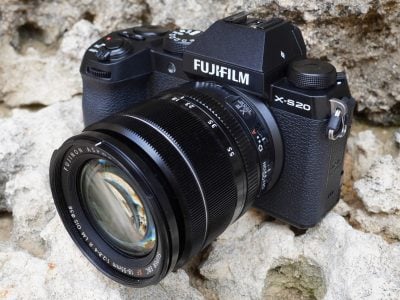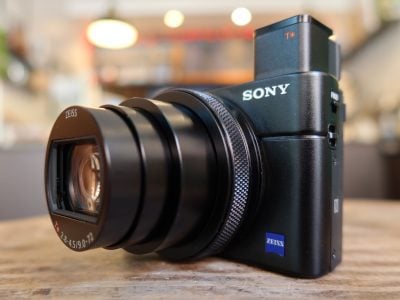Sigma 300-600mm f4 DG OS review
-
-
Written by Gordon Laing
Intro
The Sigma 300-600mm f4 DG OS is a bright aperture, super-telephoto zoom aimed at high-end sports and wildlife photographers.
At the time I made this review, it’s available in Sony-e and L-mounts, and costs around $6000 or pounds. That’s obviously a lot of money, but actually a relative bargain compared to the 600 f4 primes it goes up against, as they can cost over double that – yep, 13,000 for Sony or Canon’s latest 600 f4 lenses, while Nikon’s version with a built-in tele-converter will set you back 15,000.
So not only does Sigma’s lens give you a 600 f4 at less than half the price of Sony and Canon, but can also zoom-out to 300mm giving you greater flexibility than a fixed prime. Indeed it could replace a 300, 400, 500 and 600, at least if having f4 at all those lengths is sufficient for your needs. But can it really deliver the same experience and quality of those primes, and what are the gotchas? Find out in my full video review below, or if you prefer to read the written highlights, keep scrolling!
Announced in February 2025 alongside the 16-300 super-zoom and the stylish BF camera, they jointly become the first models to sport Sigma’s new branding, and like all Sigma products, are made in Japan.
Sigma of course has a long history of super-telephoto zooms, several of which have also sported bright apertures. Most notably the 120-300 2.8 from 2010 and the ultimate Bigma, the 200-500 2.8 from 2008. But as far as I can recall, no-one’s attempted a 300-600 f4 so far, and I’d argue this model also becomes their most professional lens to date.
First things first, measuring 167mm in diameter and 468mm long, the Sigma 300-600 is very similar in size to the latest 600 f4 primes from Sony and Canon. But pick it up and it’s noticeably heavier, weighing a fraction under 4kg versus a fraction over 3kg for its latest rivals. So it’s around 1kg heavier, but to be fair, this is compared to the most recent 600 f4 primes, as some older versions actually weighed considerably more.
It’s important to remember the Sigma also eliminates the need to carry a 300 f4, which could typically weigh a kilo by itself, or indeed a 400 and 500 prime. And don’t forget many sports pros will be carrying a second body for a second lens too, so for a single lens and body solution, the Sigma 300-600 isn’t unreasonable in heft.
But I still need to stress this was one of the heaviest lenses I’ve used for a long time, getting on for 5kg with a body and the hood attached. That may not sound like much for the gym bunnies out there, but once you start swinging it around to follow the action, like birds in flight, you’ll feel it. This is a lens that really benefits from a monopod or tripod for prolonged use.
The build quality is excellent though, up there with the best of the pro super-teles from the big names, and Sigma’s first lens to sport a white finish with thermal insulation paint. It is of course sealed from dust and splashes, including a rubber grommet at the mount.
Starting closest to the mount is a compartment for drop-in filters measuring 40.5mm. Next comes a bank of four switches, including a focus-limiter, the optical stabilisation mode and a custom switch. Sigma claims 5.5 stops of compensation from the stabilisation.
On the opposite side of the barrel is a switch to set the outer-most control ring between motorised power focusing or jumping to a preset distance, while above it are a switch for a confirmation beep and a button to lock-in that focusing distance. I’ll demo this later.
Next comes the built-in collar which allows the lens to rotate by 360 degrees when mounted on a tripod, with a generous knurled knob to lock it in position. The collar is also where you’ll find a pair of strap mounts as like other super-teles, you should be supporting the lens, not the camera.
Impressively the tripod collar not only has four clicked positions to help you find 90 degree intervals, but a switch underneath to declick it and allow free-spinning. This is the first time I’ve seen this and it’s so nice to choose between free or clicked rotation, as different subjects
Meanwhile like other big Sigma lenses, the tripod foot already includes an Arca Swiss dovetail, allowing it to slide straight into a compatible clamp. In contrast, Sony, Canon and most others force you to buy a third party replacement foot if you’d like this functionality. That said, if you prefer a different base, you can also remove Sigma’s foot. Like other super-teles, it’s possible to use the foot as a carrying handle, and bonus points to Sigma for considerately padding the other side, making it more comfortable to hold.
Next comes a generously wide manual focusing ring which spins freely and smoothly. The closest focusing distance at 300mm is 2.8m or 4.5m at 600mm. After this is the zoom ring, easy to hold at 6cm wide and providing enough friction to stay at the selected focal length. Notice how the zooming is internal, unlike Sigma’s other current super-teles which typically have extending barrels. This makes the 300-600 feel much better-balanced and quicker to respond.
After the zoom ring comes a twisting control ring with two different functions using that switch near the mount. Set to Power Focus and it’ll offer two different motorised focus speeds which can be nice for smooth focus-pulls in video. Here’s how it looks smoothly racking focus while recording. It can look good, but it’s easy to overshoot your target at such long focal lengths and large apertures, so you may need several takes to nail it.
Set to Preset though and you can save a specific focusing distance, then use a twist of the control ring to return to it almost instantly. This allows you to preset the focus on, say, a football net or a bird’s nest, safe in the knowledge you can snap back to it at any time with a quick twist. You can see it here snapping onto the bottle which I’d saved as a preset distance.
We’ve seen this kind of functionality on other super-tele primes and it can be really useful, but I found it a bit odd only one distance can be programmed given the ring could be twisted in either direction.
Then just before the barrel expands to house the front elements, you’ll find four custom buttons at 90 degree intervals. These all perform the same custom function, normally focus-hold.
Sigma supplies a large cylindrical lens hood, 165mm long by itself, which slides over the end of the barrel with a locking screw to hold it in place. Like most super-teles, this is rubber tipped, allowing you to securely stand the lens upside down on the ground. The lens is also supplied with a material-based lens cap – check Sigma’s website for details on supplied and optional accessories.
Like most pro super-teles, Sigma supplies the 300-600 with a well-padded case with shoulder straps that let you wear it as a backpack. There’s pockets and straps on either side to accommodate tripods, monopods or other accessories. There’s just about room to mount a body on the end of the lens while it’s in the pack, but I don’t think this is recommended. Instead I’d keep the body separated during transportation, and there’s room to squeeze it in the top of the bag if desired.
Ok now for the range which takes you from 300mm to 600mm, which includes the classic focal lengths popular with most sports and wildlife photographers. In theory this single lens could replace a 300, 400, 500 and 600, so long as the f4 aperture is sufficient for you.

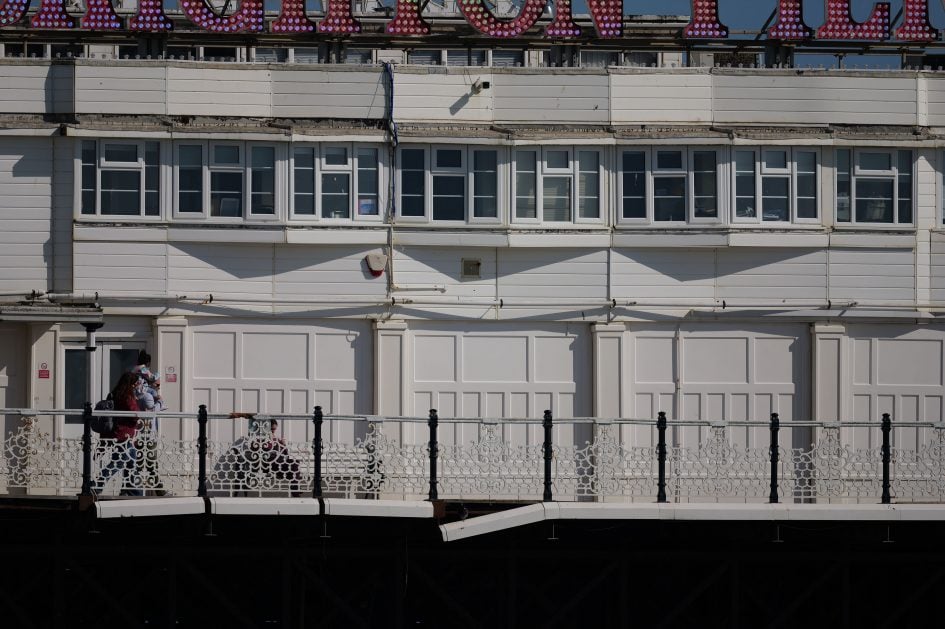
This makes the Sigma lens very convenient but there are three gotchas to be aware of. First, the 300-600 is not parfocal, which means it may lose focus briefly if you adjust the zoom during a continuous burst. This could limit you if your subject is approaching quickly, and you’re adjusting the zoom to keep it framed as desired.
If you’re likely to zoom during a burst, you’ll be better-served by something like a Sony 200-600 or 400-800, both of which also have lighter and short-throw rings designed for this kind of operation, not to mention dimmer apertures that are less demanding. So rather than zooming during bursts, I typically adjusted the focal length between them on the Sigma. In this way I treated it more like a series of primes rather than a zoom, and still remains way faster to switch between them than picking up a second body or swapping lenses. Ultimately it’ll depend on your subject and use case though.
The second limitation regards tele-converters. If you have the e-mount version for Sony bodies, you can’t use it with Sony’s own teleconverters on a Sony body, and sadly Sigma doesn’t make e-mount TCs of its own. I believe this may be a licensing restriction.
There’s no issues or workarounds needed with the L-mount version though, with the 300-600 working just fine with Sigma’s own teleconverters for that system. That said, 600mm is already pretty long and most modern bodies already offer plenty of resolution for cropping, so the inability to use TCs on Sonys may not be that big an issue.
The third limitation regards burst speeds on the e-mount version as Sony still annoyingly limits all third party lenses to 15fps when using continuous AFC. So while it may be possible to shoot at 120fps with the 300-600 on an A9 III, it’s only available in single AFS mode, which isn’t particularly useful for sports, wildlife or action. Clearly this is Sony protecting its system, and only allowing their own lenses to work with TCs and above 15fps, so this is a limitation you’ll need to weigh-up for yourself.
Again there’s no such limitation for L-mount owners, as the L-mount version of the 300-600 will work with the 40fps top speed of the Panasonic Lumix S1R II, and that’s the combination I used for my tests.
Note you may also be able to bypass both the burst and teleconverter restrictions when adapting the e-mount version to a different system. For example, Polish photographer Dariusz Bres has published a number of tests with the Sigma lens coupled with Sony TCs on Nikon Z bodies using the Megadap Pro adapter, and they seem to focus fine, while also supporting the top burst speeds.
Ok now for my focusing tests starting with the lens at 300mm f4, near to its closest focusing distance, and again all my tests were made with a Lumix S1R II body. Here you can see the combination hunting briefly at times with this particular subject and distance, but the actual focus pull itself is very swift. And now again at 600mm f4, again near to the closest focusing distance, where the racking speed is similar, but the performance looks more confident with less hunting.
As mentioned earlier, you can preset a focusing distance and snap straight to it with a twist of the control ring near the end of the barrel. Great for quickly returning to, say, a bird’s perch or a sports goal. This can also work well for video. Here I have the AF area set to the background, but can immediately switch back to the preset distance of the bottle with a twist of the control ring if desired. Very handy, although it could be even better with two different presets controlled by twisting the ring in opposite directions.
Ok now for the optical quality, starting with a distant real-life subject and angled so that details run into the corners. You’re looking at the lens at 300mm f4 here, and taking a closer look in the middle shows very fine details out of the gate. Closing the aperture may give a mild impression of the image becoming a tad sharper, but this is more likely to be down to the depth of field becoming more forgiving. So back to the f4 sample before heading into the far corner where, again the details are very crisp with no evidence of softening. Again if I close the aperture you may notice a fractional improvement, but again I’d say this is more down to the depth of field.
So now for the lens at the long-end of the range at 600mm f4 where depth of field and heat rising can become magnified for a subject at this distance, but let’s take a closer look in the middle anyway. And here you’ll see the lens delivering very crisp details right out of the gate. Stopping down can boost the overall sharpness of this subject, but again that’s more of a depth of field adjustment. So back to the f4 sample before heading into the far corner where again the details remain very crisp without any issues to report. Closing the aperture here again is more about adjusting the depth of field.
I also tested the lens at 400 and 500mm with similar results, where the details were sharp across the frame at the maximum aperture. It’s an excellent performer optically.

Above: Ok, how about a closer subject, such as at a portrait distance? Here’s a couple of quick shots with the lens, starting at 300mm f4 where you can see the potential for background blur.

Above: and now at 600mm f4, not exactly practical for most human subjects, but I wanted to show you anyway! Note those weird-looking bokeh blobs were down to harsh reflections on the parked cars behind me. With less harsh reflections, the rendering, as you’ll see in my following samples can look very nice.

Above: So here’s my bokeh ball test, reframed to accommodate the long focal lengths and more distant minimum focusing distances, starting here at 300mm f4 where you can see the bokeh balls are well-behaved with minimal outlining or textures within. Closing the aperture to f5.6 renders most of the blobs as more uniform circles, while at f8 you’ll notice the diaphragm system nicely keeping out of the way.

Above: So now here’s how it looks at 600mm f4, again from the closest focusing distance and rendering nice-looking blobs without any obvious issues. Closing down one stop again renders them mostly as circles across the frame, and one stop further shows the lens is still avoiding a geometric aperture opening.
Check prices on the Sigma 300-600mm f4 DG OS at B&H, Adorama, WEX UK or Calumet.de. Buy used gear from MPB. Sell your used gear to MPB. Alternatively get yourself a copy of my In Camera book, an official Cameralabs T-shirt or mug, or treat me to a coffee! Thanks!
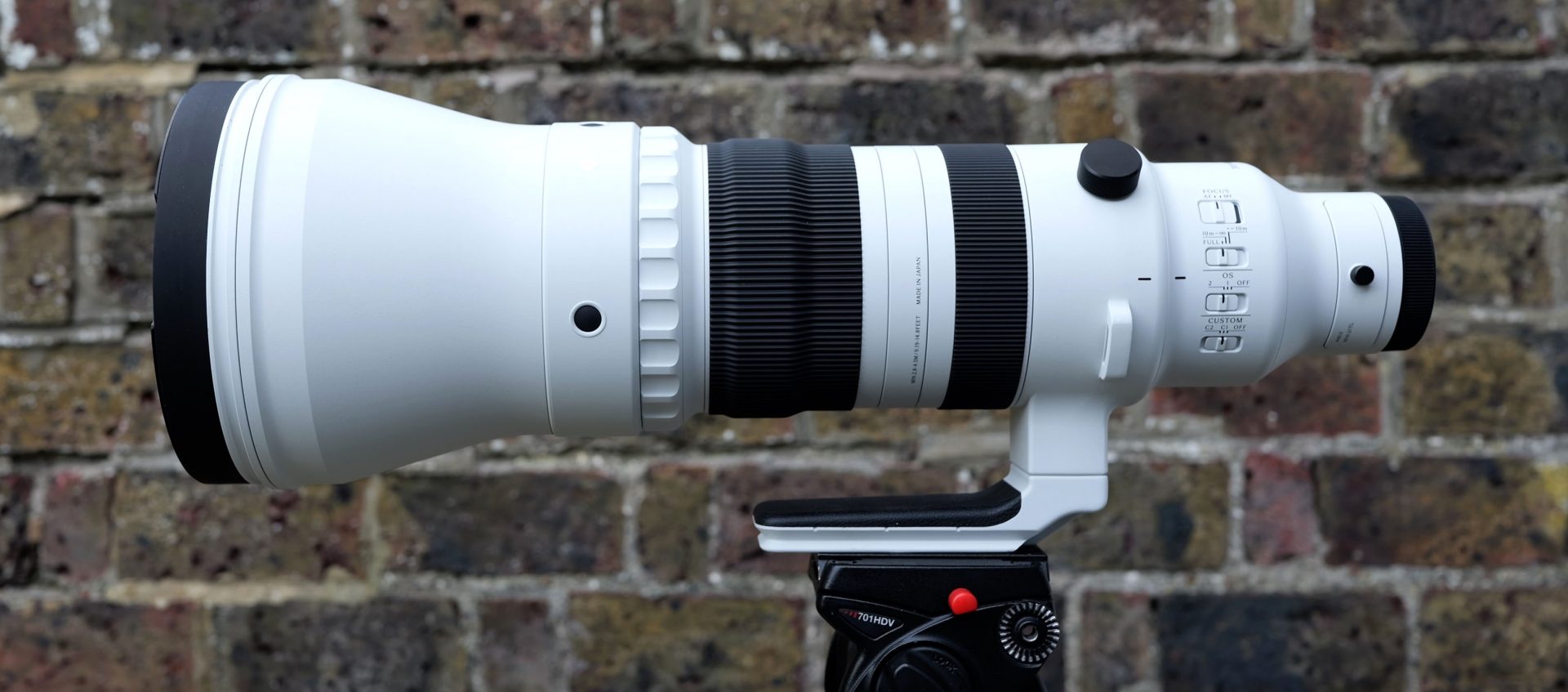
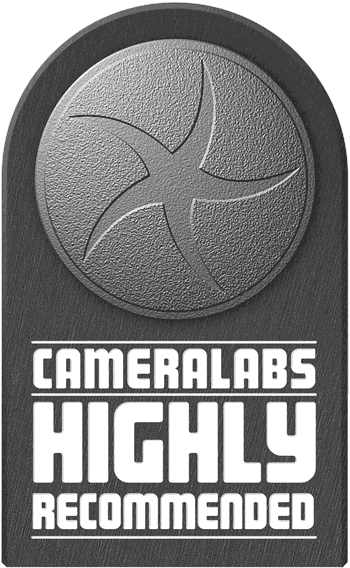 The Sigma 300-600mm f4 is a remarkable lens in terms of flexibility, price and performance. It starts by giving you a 600mm f4 at roughly half the price of those from Sony, Canon and Nikon, already making it tremendous value. It then gives you the chance to zoom out to 300mm, giving you greater flexibility than a traditional prime, and best of all, in my tests the optical quality was superb, delivering crisp details throughout the range and across the frame wide-open at f4. The build quality and feature-set are also excellent, including a tripod collar that can be clicked or declicked and an Arca dovetail carved into the foot. What’s not to like? Most obviously it’s a heavy lens at roughly 4kg alone, but you are getting a zoom that could replace multiple primes. Secondly, it’s not parfocal, which means the focus needs to be adjusted as you zoom. Third are restrictions Sony enforces on third party lenses, namely a top burst speed of 15fps when using continuous autofocus and incompatibility with their teleconverters. So you need to ask yourself if you’d exploit the flexibility of a zoom, and whether you need f4 at 600mm, and equally if f4 is sufficient at 300. Then you have to factor in if you need a parfocal zoom and in particular if the restrictions on Sony bodies are deal-breakers or not. But regardless Sigma has shaken-up the super-telephoto end of the market by delivering not just a uniquely flexible high-end lens, but one that substantially undercuts traditional big primes on price while still boasting excellent performance.
The Sigma 300-600mm f4 is a remarkable lens in terms of flexibility, price and performance. It starts by giving you a 600mm f4 at roughly half the price of those from Sony, Canon and Nikon, already making it tremendous value. It then gives you the chance to zoom out to 300mm, giving you greater flexibility than a traditional prime, and best of all, in my tests the optical quality was superb, delivering crisp details throughout the range and across the frame wide-open at f4. The build quality and feature-set are also excellent, including a tripod collar that can be clicked or declicked and an Arca dovetail carved into the foot. What’s not to like? Most obviously it’s a heavy lens at roughly 4kg alone, but you are getting a zoom that could replace multiple primes. Secondly, it’s not parfocal, which means the focus needs to be adjusted as you zoom. Third are restrictions Sony enforces on third party lenses, namely a top burst speed of 15fps when using continuous autofocus and incompatibility with their teleconverters. So you need to ask yourself if you’d exploit the flexibility of a zoom, and whether you need f4 at 600mm, and equally if f4 is sufficient at 300. Then you have to factor in if you need a parfocal zoom and in particular if the restrictions on Sony bodies are deal-breakers or not. But regardless Sigma has shaken-up the super-telephoto end of the market by delivering not just a uniquely flexible high-end lens, but one that substantially undercuts traditional big primes on price while still boasting excellent performance.
